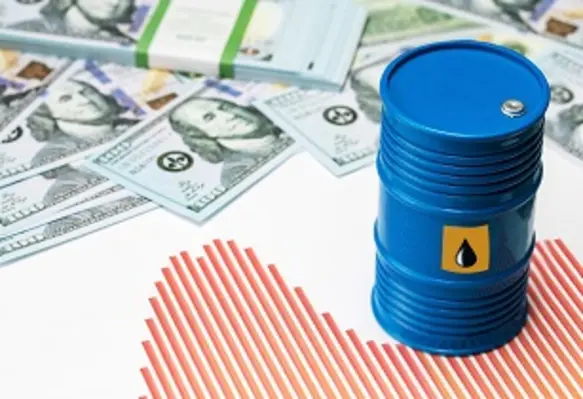The oil market, after a volatile year, still faces multiple headwinds, says Moin Siddiqi, economist
Several factors are at play which impact supply and demand dynamics, notably Europe’s energy crisis; tightening monetary policy globally; expectations of a material slowdown in economic growth and possible recessions; Covid fears in China (the world’s top oil-importer); the loss of Russian supply; and Opec+ output cut(s).
Crude oil futures exhibited significant swings over 2022 from ‘Backwardation’ (something which typically occurs at times of supply deficit) to a ‘Contango’ structure, signalling a sluggish demand or an oversupply. The Russian invasion of Ukraine drove backwardation to its steepest in history – with Brent hitting US$140/barrel (bbl.) briefly in March 2022. Expectations of global slowdown - or worse, a looming recession - pulled oil in different directions (contango), with prices steadily falling to mid US$80s at the time of writing.
Backwardation is where [near-term] crude futures trade at a premium to long-dated delivery, whereas a contango market occurs when future price is more expensive than spot price. The current situation indicates oil could drop further because of well-supplied markets in the Atlantic Basin and Northwest Europe.
Likely market scenarios:
Upside potential: Soft landing in US and Europe; full reopening in China; Russian sanctions; OPEC+ restrictive supply management plus low spare capacity; declining US shale oil supply and escalating geopolitical tensions.
“We expect the sanctions on petroleum products (effective from Feb 5) will cause greater disruptions to Russia’s oil production and exports because finding alternative buyers as well as transportation and other services to reach those buyers is likely to be more challenging than for crude oil,” the US Energy Information Administration (EIA) said.
The catalyst is China, where demand is poised for a medium-term rebound as authorities are resolved to boosting consumption recovery. S&P Global noted China is “one big wild-card on the upside that hangs over the oil market.” China’s pro-growth policy alone could prevent threats of a global downturn.
Spare capacity globally is currently at a minimum – mostly confined to Saudi Arabia and the United Arab Emirates. Moreover, global oil inventory is at the lowest level since 2004. Both factors, plus reduced refining capacity and investment means current global output capacity may be inadequate to cope with an unexpected buoyant consumption later in Q4 or early 2024 – hence oil price rally.
Fuel-switching is oil supportive; natural gas prices are exceptionally high in Europe and Asia, pushing industrial users to switch from more expensive natgas to petroleum products like fuel oil or diesel, increasing demand for crudes. The risk of production outages from five fragile producers: Iran, Iraq, Nigeria, Libya, and Venezuela, with combined output of 9.88mn bpd in 2022 (OPEC data) - all struggling with domestic problems – thus could lead to a tighter oil balance.
Downside risks: Hard landing (i.e. prolonged recession) across the industrialised world, plus tepid growth in emerging Asia, thus less energy usage; Covid resurgent in China; a resolution of the Russia-Ukraine conflict; and the peaking of US dollar – making dollar-denominated crude oil less expensive.
In a recent note, Barclays cautioned in the event of a slump in global manufacturing activity (like the 2008-09 crisis), oil demand estimate would fall by 1-2mn bpd, which in turn, would reduce oil prices by US$15-25/bbl. from its current forecast of US$98. “The cyclical demand trends are pointing south for oil,” Barclays said. Manufacturing activities globally are in contraction territory.
This year’s average forecast for Brent (global benchmark) from 1,000 energy professionals compiled by Reuters (as of January 16 2023) is US$87/bbl. Major investment banks are also bullish seeing oil at US$80-90 in 2023.
Global supplies could experience some tightness over coming months if ‘bige three’ economies - the US, Eurozone and China - return to durable growth in second-half, coupled with OPEC+ supply cuts and sustained Russian sanctions. The International Energy Agency (IEA) expects a tighter market balance with demand surging by 1.9mn bpd versus supply growth of 1mn bpd in 2023.
In summary, oil fundamentals are far more positive than in early 2020. There are no threats of price wars by producers, collapsing demand due to COVID-related economic doldrums or/and major supply expansion in pipelines. The OPEC+ alliance seems resolved to defend a US$80 floor under oil prices. That said, a cheaper oil scenario (below US$70.) would play out in case of severe economic headwinds.
The general expectation is that despite the slowing global economy, prices will strengthen based on the Opec+ decision and Ukraine-Russia war.









